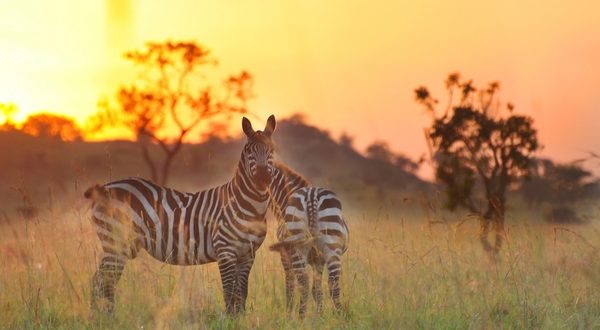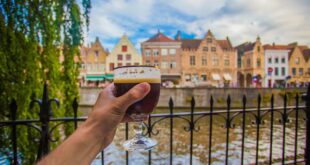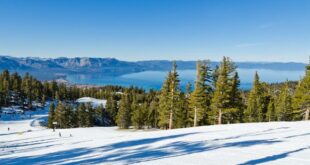[ad_1]
To say that Uganda’s northeastern region bordering Kenya and South Sudan is a place that exists under the radar would be an understatement.
Even the most adventurous of travelers have yet to truly discover this isolated region that was long inaccessible by road and troubled by tribal conflicts.
But a variety of forces have come together to change Karamoja’s status.
In 2011, peace returned to the region. After that came a newly paved highway, chartered air service and the opening of an exclusive safari lodge.
Suddenly Karamoja has become a place you don’t want to miss, particularly if seeing a bit of Africa that has yet to be overrun by tourists or overly modernized, is on your to-do list. The northeastern Karamoja region is home to some of the country’s most rugged beauty and East Africa’s last preserved indigenous cultures.
The region’s top attractions include:
Karamoja Cultural Event Group Safari: August 28 – September 1
The Karamojong people are nomadic agro-pastoralists known for their love of cattle and their resistance to the trappings of modern civilization. They consist of numerous tribes and clans who migrated from modern day Ethiopia including the Maasai and Turkana. Due to years of isolation and their strong beliefs, the Karamojong people have been able to maintain their ancestral customs dating back thousands of years.
Those traveling to Uganda this summer may want to plan their visit to coincide with the fifth annual Karamoja Cultural Event taking place August 28 – September 1.
The event brings tribes from this region of Uganda and neighboring countries together to celebrate their past and welcome their future. Travelers are invited to attend the festival and explore the region as part of a three-night safari that includes a bush camp experience in a Karamoja village where visitors spend the night in a hut.
Additional activities include learning to milk cows, identify local plants, and experience traditions such as spearing a cow to feed the village. There will also be game drives and bush walks in Kidepo Valley National Park.
Prices for this experience start at $385 per person (depending upon the final group size). The safari allows for a maximum of eight participants.
Cycle Through Ancient Lands during the Second Annual Tour of Karamoja: October 6 – 8
The Karamoja region offers terrain and landscapes that make cycling a true adventure. Bike tours allow cyclists to drive over old colonial roads, enjoy the views of rolling plains, and interact with local communities. From October 6 through October 8, former Tour de France cyclist and present day CNBC Sports commentator Paul Sherwen will be hosting the second annual Tour of Karamoja bike ride. The event will include bush camping, ceremonial events with the local Karamojong people, and more.
Visit Uganda’s Most Remote Community
In Uganda’s northernmost hills, the Ik tribe makes their home on Mount Morungole. The Ik were displaced from the lower reaches of Kidepo Valley National Park half a century ago and now maintain their way of life on the mountain ridges.
Those seeking a true adventure can embark on a day-long hiking excursion to an Ik village. The higher travelers climb, the more breathtaking scenery awaits with views into the Eastern Rift Valley of Kenya, South Sudan and beyond.
Spot Wildlife in Kidepo Valley National Park
Kidepo Valley National Park offers remote, rugged African wilderness. Big game include elephant, giraffe, lion, cheetah, zebra, eland, hartebeest, hyena, and one of Africa’s largest herds of buffalo call Kidepo home. Vast grasslands extend in all directions toward distant mountain ranges providing an unmatched feeling of solitude.
Spot Some of Uganda’s Most Interesting Birds
More than half of Africa’s bird species can be found in Uganda, and birding opportunities abound in Kidepo Valley National Park.
Some of the birds that make the park home are the Abyssinian Roller, Purple Heron, and Clapperton’s Francolin, which is found only in Kidepo. The area’s wetlands are among the best places in the country to spot the prehistoric-looking shoebill crane.
Excursions allow visitors to trek the shoebills by canoe while viewing ancient rock paintings and keeping an eye out for the African Hornbill, Fox Weaver, and more.
Where to Stay
The Karamoja region has a select number of accommodation options for travelers to consider, from luxurious lodges to tented camps.
Apoka Safari Lodge, the luxury lodge serving Kidepo Valley National Park, is located on a small hill overlooking the Narus Valley in the park’s southwestern sector.
The lodge can accommodate up to 28 guests in four twin cottages that sleep up to four guests and six double cottages that sleep two guests. Accommodations have been designed with comfort in mind, and local craftsmen constructed Apoka’s interiors, oversized furniture, and natural canvas walls by hand. Wildlife can be viewed from private verandas and outdoor stone bathtubs located on each cottage.
Apoka also offers a natural swimming pool carved out of a large rock that is the perfect place to relax after a day in the bush. Full board nightly rates at Apoka start at $399 per person in low season (March – May; October – November) and $616 in high season (Jan – February; June – September; December) based upon double occupancy. Two game activities per day are included in the full board rate.
The newly opened Karamoja Safari Lodge is located in the beating heart of the Karamoja region at the slopes of the extinct volcano of Mount Moroto.
The lodge design is a blend of traditional customs and local materials with a modern touch. It boasts seven well-appointed safari tents and four guestrooms. Full board rates are $140 per night, based upon double occupancy. Camping sites are also available.
In nearby Kaabong town, the new Kaabong Resort features deluxe accommodations including 30 guestrooms and suites with complimentary Wi-Fi and stunning mountain views, a gym, spa, wellness center, and more. Double rooms start at $92 per night.
Nga’Moru Wilderness Camp, which means “the place of rocks,” sits on the edge of Kidepo Valley National Park and offers five spacious cabanas with ensuite bathrooms and private verandas overlooking the Narus Valley. Full board rates are $165 per night, based upon double occupancy.
More information about the Karamoja region can be found at the Karamoja Tourism website. Charter flights are available via domestic carriers like Aerolink and Fly Uganda.
The locally owned and operated Kara-Tunga Arts & Tours operates numerous ground excursions and tours in the region. Activities can also be booked via the Uganda Wildlife Authority.
[ad_2]You can read more of the news on source
 Travelsmart
Travelsmart



